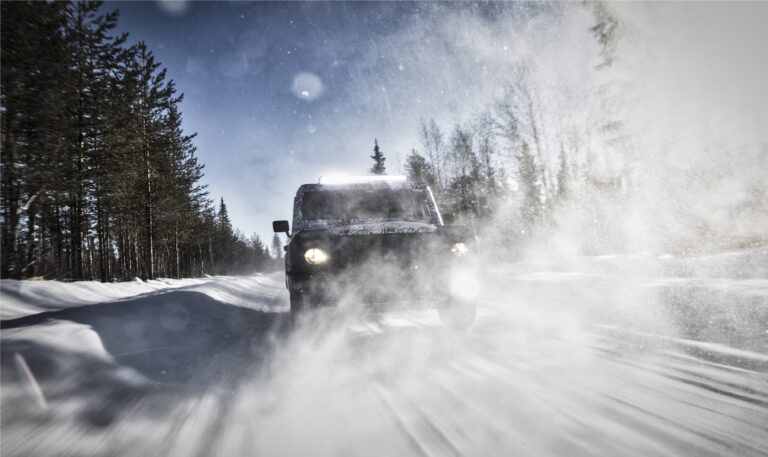So, the old British warhorse got sent to the knackers’; we all know that by now. Odd, then, how such a venerable icon never really got its time of day in this column.
Sure, I did a sort of pseudo-eulogy for it the week the official death announcement was made, but obituaries can be found a few pages further down the newspaper, not here.
Around here we like to drive more than anything else, and then we write about the drive. As a proper send-off, a real farewell, how about we give the Land Rover Defender one final spin round the block?
*Full disclosure: Jaguar Land Rover sub-Saharan Africa wanted me to drive one of their cars, so they called me from South Africa, authorising me to helm a vehicle that was parked less than 15km from my house. Just to be clear, I don’t live anywhere near South Africa. I had a choice of literally any vehicle from the JLR SSA East African motor pool at RMA Motors, and yes, that included dreamy things like the Jaguar XJ limo and/or the F-Type sports car and/or any Range Rover.
I e-mailed them back saying, “I want the Land Rover Defender”.
They said, “Sure thing, visit your nearest dealer and ask for the keys”.
And I did.
So, here we are. There is nothing about flashy design or manic acceleration where the Defender is involved, so let’s get that out of the way first. The Defender, as has been said endless times, is a square brick that serves all sorts of purposes, from “break-downing” (and sometimes breaking down), to “ambulancing”, to firefighting to transporting members of the ruling class.
GOOD OFF ROAD
Last Friday, one more function was added to its lengthy curriculum vitae: participating in a final-rites farewell drive that had all the mood settings of that one date where one person says, “We can’t see each other anymore” and the other person sadly agrees, and they part ways with a handshake and perfunctory hug, not a sloppy tongue kiss like it used to be in the heady days of certainty and assurance, and there is no looking back once their backs are turned.
There might be a single, cold, salty tear shed from the corner of the left eye and I think I have gone way off topic here, so let’s dial it back a little.
We are sad to see it go. We will all miss the Defender, that’s for sure. But will we, really? You see, driving the Land Rover Defender is a classic case of “never meet your heroes”. Let me explain.
I’d wager that at least seven-and-a half out of 10 automotive bucket lists feature the Land Rover Defender somewhere.
Of these seven-and-a-half, the split between the short wheelbase 90 and the long wheelbase 110 is probably 40:60, and these sketchy statistics of mine reveal one glaring fact: the people who come up with these lists have never driven a Defender.
Sure, we all know how good the Landy is off road, but 1. Opting for the infinitely more handsome 110 over the 90 is an exercise in fallacy because the 90 handles better and is far superior off road.
Compact SUVs are always more tractable than their LWB counterparts when the going gets rural. 2. Own a Defender and see if you don’t revise your own list to now include a Landcruiser instead.
I have driven Defenders a few times and each and every single time there was something wrong with the car. Nothing mechanical, but just something wrong with the build somewhere.
First time was a late ’80s model with no HVAC. If it was cold, you’d best have a heavy sweater with you. If it was hot, you had to open the windows and the flaps below the windscreen, in which case warm air blew into your face along with a large part of the environment, odds and ends up to, and including, but not limited to dust and insects.
You’d be blinded in short order, forced to pull over to cough up arthropod parts from the back of your throat, blink several times to wash out the mud in your eyes then continue, only to repeat this process half an hour later. Another instance involved a much newer vehicle, something from this century at least. While the actual car was from the 21st Century, the suspension was not. It was rock hard.
Fred Flintstone would easily identify with it. The ride was jarring and bouncy, causing my teeth to smash against each other, compelling me to roll my tongue inside my mouth lest it got chopped in two. My spine hurt for several days after that drive.
Last Friday was no different. I showed up in Westlands where I was presented with a fetching, 5-door 110 in dull brown with black highlights, along with alloy rims I had never seen on a Defender before. Ingress was… ahem… a kerfuffle. The plipper did nothing but cause the indicator lights to flash but the car remained locked, so I had to use the key. Fine.
Turn the key, driver’s door unlocks. The other doors remain locked. No central locking. Oh well, it’s a Defender after all, one of the most basic forms of motoring. If you want central locking, buy a Discovery… or a Landcruiser.
RUGGED USABILITY
So getting into a Defender is like getting into the tool shed in your backyard. The inside is like a tool shed too, despite numerous “updates” over the past seven decades, the interior is still as Spartan as Leonidas I.
Sure, I can see an HVAC kit (no more eating insects, yaay!); and the car did give a small wobble as I clambered in, which meant the suspension had a little more give in it (no more broken teeth, yaay!), but this is not a Range Rover.
The whole raison d’être of the Defender is rugged usability, so the inside has to be easily and quickly washable via a well-aimed bucket of water thrown in through one of the five doors, and it lives up to the brief.
It is entirely made of plastic. I did see a radio that I didn’t bother with. I also saw a steering wheel, pedals and a handbrake lever.
TURN THE KEY
The steering felt larger than it looked. Odd. There is no adjustment for it, so sorry short people, you might have to drive standing up. Not a problem because the pedals were also oddly positioned, like the pedals on a church organ. To use them, you adopt an upright posture with your feet flat on the floor like a typist from an early James Bond film, or you drive standing up.
The handbrake was too far, located way down inside the footwell next to the clutch pedal. Ah well, I won’t need it anyway. Key in hand, time to fire it up and where is the ignition switch? Oh, right, it’s on the left. So why won’t the key turn? Well, to start the Land Rover, the key has to be turned counter-clockwise, not clockwise like in normal cars. So turn the key.
There is a sound, not unlike an air conditioning unit from the 1960s. It is a muted clatter, not exactly a rattle, but definitely a low-frequency sound that signifies this utility feeds off the black pump at a fuel forecourt.
The Defender runs on the famous 2.2 litre Puma engine, a turbocharged diesel mill that develops 122hp or thereabouts. For the second time in as many weeks, I am driving a huge utility with a motor the size of an electric shaver up front. I am of the old school and still believe there is no replacement for displacement. Regulations can be a pain. The Defender deserves a V8, but it’s dead anyway, so there goes that.
What’s next? Lift-off. The clutch is sticky, non-progressive and has a high biting point. This will be a difficult cross to bear during hill starts, given that the handbrake is so far out of reach, they might as well have mounted it on the grille.
I peg the clutch action down to the newness of the car – maybe this will ease out over time, so with a few jabs on the accelerator pedal, along with the slowest declutching movement in history, the Defender takes off without ignominy.
DOES NOT HAVE TRUCK UNDERPINNINGS
In my Amarok review, I used the phrase “truck underpinnings”. The Defender does not have truck underpinnings; the Defender is a bloody truck, a fact made embarrassingly clear at the first 90-degree right-hand turn while still inside the RMA upstairs parking lot. I did not twirl the tiller enough times to make the turn, so I almost ended up on the wall.
The day you find yourself as a motoring hack making a three-point turn in an ordinary corner with a Land Rover sales executive quietly watching your epic fail is the day you question your existence as a helmswright and wonder whether you might have been spending too many hours in Subarus with quick-ratio steering racks. Or maybe my expectations of the Defender’s turning circle/rack ratio were a little higher than they should have been.
I make sure not to repeat this fiasco in the next 90-degree turn, so I turn the wheel… and turn… and turn again until I make it through in one move. Sweet…
(Upon reflection, the Defender’s steering is just fine… almost. Sure, the ratio is higher than usual, but the massive vehicle dimensions, very high driving position as well as temporary distraction trying to locate various switches might have led me to take a slightly wider line than I should have. Just remember the Defender’s truck-like qualities and you’ll be okay).
This is neither a road test nor a review, so the Defender will not be going off road. Instead, we take a slow, relaxed drive around the greener, wealthier western fringe of the city, having a three-way chat about the Defender and its successor. My legal-eagle colleague riding shotgun likes it and thinks the replacement model is nothing more than a jumped-up modern facsimile of the original, a new-age Mini on stilts.
The sales executive seated at the back extols the virtues of having a no-frills, simple automobile for use in tough situations, a mantra that is always recited whenever one has to justify the existence of this tool shed on wheels.
I, on the other hand, gripe about how small the side mirrors are, given that the sales executive is sitting dead centre on the rear bench, where I see her every time I look into the rear-view mirror; my 360-degree view can best be quantified as the square root of jack. Changing lanes is more a leap of faith than a calculated move.
AWESOME CAR
We all agree that the Defender is awesome despite its quirks. The Puma engine is torquey if a little raucous when given the beans. The gear change is a snickety-snick affair: snap shifts might lead to missed shifts, but take your time, don’t hurry and it can be a satisfying effort. Rev matching is fairly easy. The pedals have massive pads on which to stomp, a detail evocative of the intended use of this car: in the clag.
Those pedals should be easy to use even when the driver is shod in wellies (what kids call “gumboots”). Such little details are what make a car interesting to drive, and the 110 is surprisingly fun to pedal around, despite the unusual control setup.
And true to my earlier suspicions, this car is quite comfortable, so much so in fact that I deliberately thump into a few potholes just to confirm it. I am proud to report that my teeth and tongue are intact.
Bucket list? Hells yeah, sign me up for one Heritage-spec 110 with Recaro seats. The Defender bubbles under at number 11, one slot removed from the top 10. It is a quirky, unusual oddball falling off the desk that is the automotive industry and like strong liquor, is best taken in small doses at a time and might not be recommended for everyone. But like strong liquor, it has aged well, is still desirable to the discerning connoisseur, might be addictive in the long run and makes for a fine collector’s item.
Goodbye, Land Rover Defender. That was a good final date, if a little short.




